You’ll likely hear many industry commentators say that the legal sector is oversaturated. Whether you agree or not, the market is certainly fierce, regardless of the area of law you practice. Consequently, this means your marketing dollars have to work even harder than 10 years ago.
You’ve probably followed advice on how best to spend your marketing budget, and hopefully you’re getting inquiries in return. If you are, then this is great! But what about the industry as a whole? What impact is law firm marketing investment having? And what part does marketing play in a post-Covid-19 world where budgets are tight, teams are smaller, and competition is strong?
Moneypenny commissioned a survey of 250 senior decision-makers within US law firms of all disciplines, looking at how law marketing is performed, and how they’re managing new business. The results are illuminating. Clearly, this is a topic that many law firms are yet to consider, but it’s one that affects every firm, now more than ever. We hope you find this helpful and are able to use these legal marketing tips for your company.
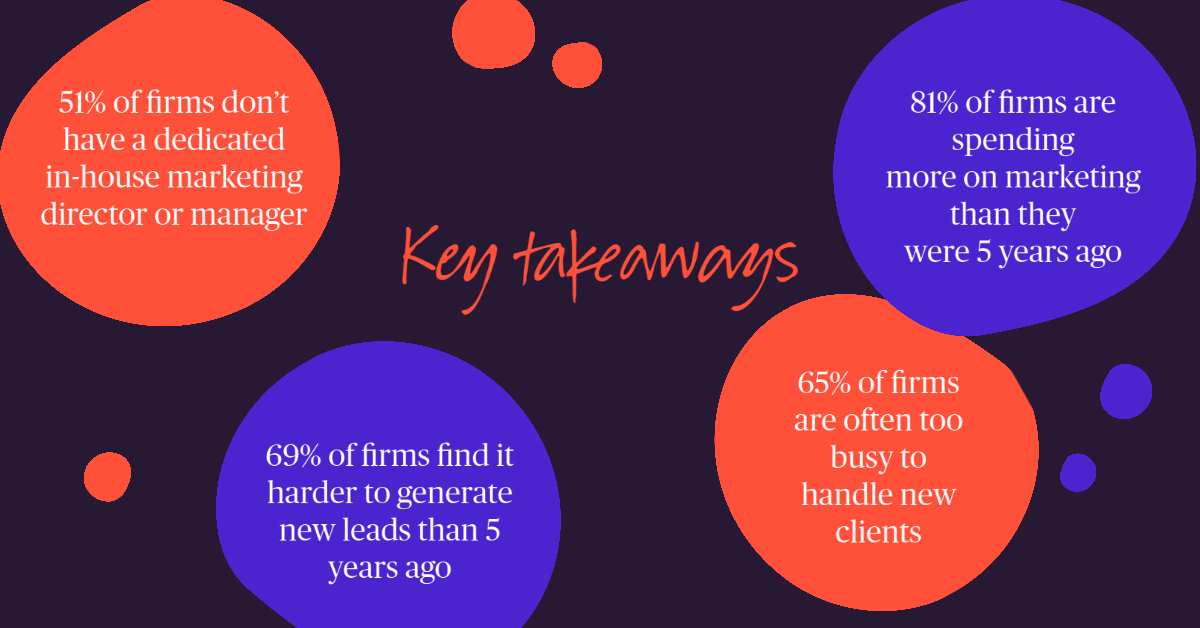
Legal marketing trends: More firms than ever have dedicated marketing resource
49% of firms have a dedicated marketing director, manager or team. A fifth (20%) outsource marketing, and the remainder (30%) still share the function between other roles.
Our data shows that firms of the highest turnover are more likely to employ a dedicated marketing team.
While many firms of differing turnover work with an outsourced partner.
On average, firms employ one legal marketer for every 25 lawyers. Source: Legal Marketing Association

The legal sector is spending significantly more on marketing, but still well below average
81% are spending more on marketing than they were 5 years ago.
11% didn’t report any change. The smallest firms reported the biggest change in marketing spend with 100% of firms with 1-9 employees increasing their spend.
The next biggest increases were with the larger firms. 83% of firms with 100-249 employees and 84% of firms with 250-500 employees reporting significant increases.
Despite this, it still appears that law firms are spending significantly less on their marketing than other businesses, spending on average just 2% of their revenue on marketing compared with the business average of 12%. Source: Legal Executive Institute / Web Strategies Inc.

Firms spend $374 on a new lead
Law firms spend a mean average of $374 on each new inquiry.
The majority of firms are spending between $100-$500 on their new inquiries.
Older firms are spending the least on acquiring new business leads, suggesting their established reputation drives much of their brand new revenue.
The youngest firms are spending the most on new leads with nearly 30% spending $500-$1,000 on new leads.
With the mean average case value being $1,883, the average firm is seeing an ROI of $5 for every $1 spent on marketing. Source: Above the Law

Overstretched: Almost a third of firms are often too busy to handle new inquiries
65% of firms are either ‘always’ or ‘very often’ too busy to handle inquiries from potential new clients.
While 28% of firms admitted that their teams were only sometimes too stretched to best handle inquiries.
This issue is impacting firms of all sizes and ages with only the biggest firms being slightly more optimistic about their ability to manage a new inquiry properly.
With lots of staff furloughed and fewer staff to help, this is likely to get even harder.
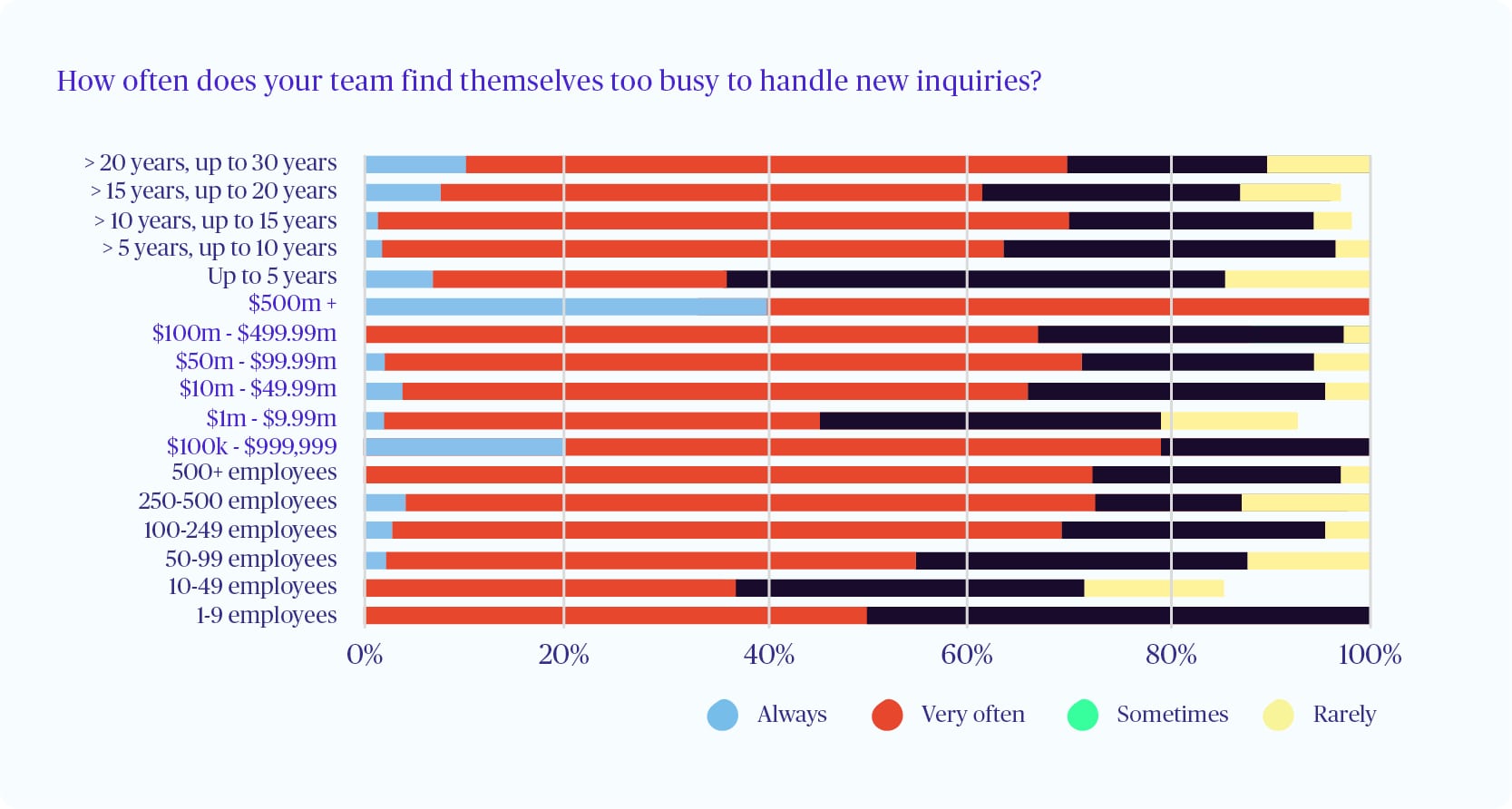
In the latest study from Bloomberg Law and the Legal Marketing Association, 325 lawyers and marketing staff reported that ‘lack of time’ is the top challenge to success for both roles.
Responding quickly to phone calls and emails is arguably the most important factor for potential clients. Source: Clio’s 2017 Legal Trends Report
Firms having to work harder to generate new business
If you’re part of the 15% of firms who are finding new inquiries more easily now than five years ago, lucky you!
For the majority of firms (69%), generating new business leads is harder.
10% of those reported it being a lot harder now than five years ago, and just 15% reporting no difference.
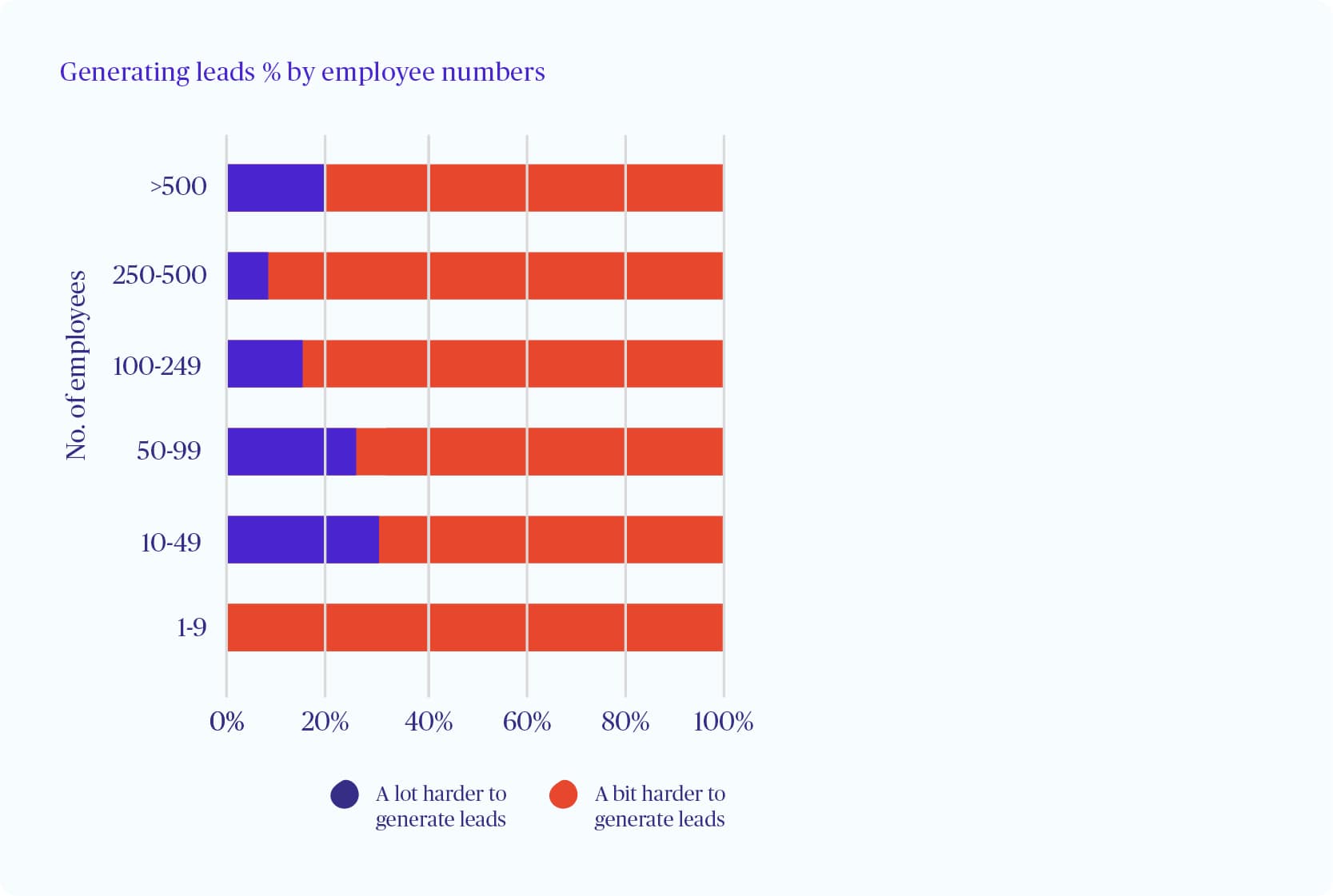
Firms shouldn’t rely on referrals only
Attorneys and law firms who rely on referrals may be missing out.
Clio’s survey showed that while 59% of clients sought a referral for an attorney, 57% searched for one on their own, predominantly using search engines and online attorney directories.
As client pools shift to younger generations, lawyers must keep in mind that their digital presence and image is more important than ever.
For example, 49% of Gen Z are likely to care about a lawyer’s website compared to 21% of Boomers.
53% of Millennials are likely to care about online reviews compared to just 25% of Boomers.
Alternatively, only 46% of Millennials are likely to value referrals compared to 60% of Boomers. Source: Clio 2019 Legal Trends Report
Fewer than 1% of firms have enough people and processes in place to ensure they rarely miss a new inquiry.
This just demonstrates that the biggest threat to growth to all firms is a lack of time.
Kate Cox, Moneypenny CMO
In demand: 82% of firms report an increase in inquiry volumes
To say there is ‘an abundance of work’ might be an exaggeration, but only 9% reported no change in the volume of inquiries in the last five years.
64% reported inquiry volumes are ‘slightly up’ and 18% reported significant increases.
More established firms are seeing the most significant increase with nearly half reporting a dramatic increase in inquiry volumes.
Note these figures refer to inquiry volumes pre-lockdown.
According to the American Bar Association, many attorneys have seen a pick-up in cases since March 2020.
Some firms have even created coronavirus task forces composed of lawyers from multiple practice areas, as firms prepare for a boost in demand for some legal services, while depression in the market for others.
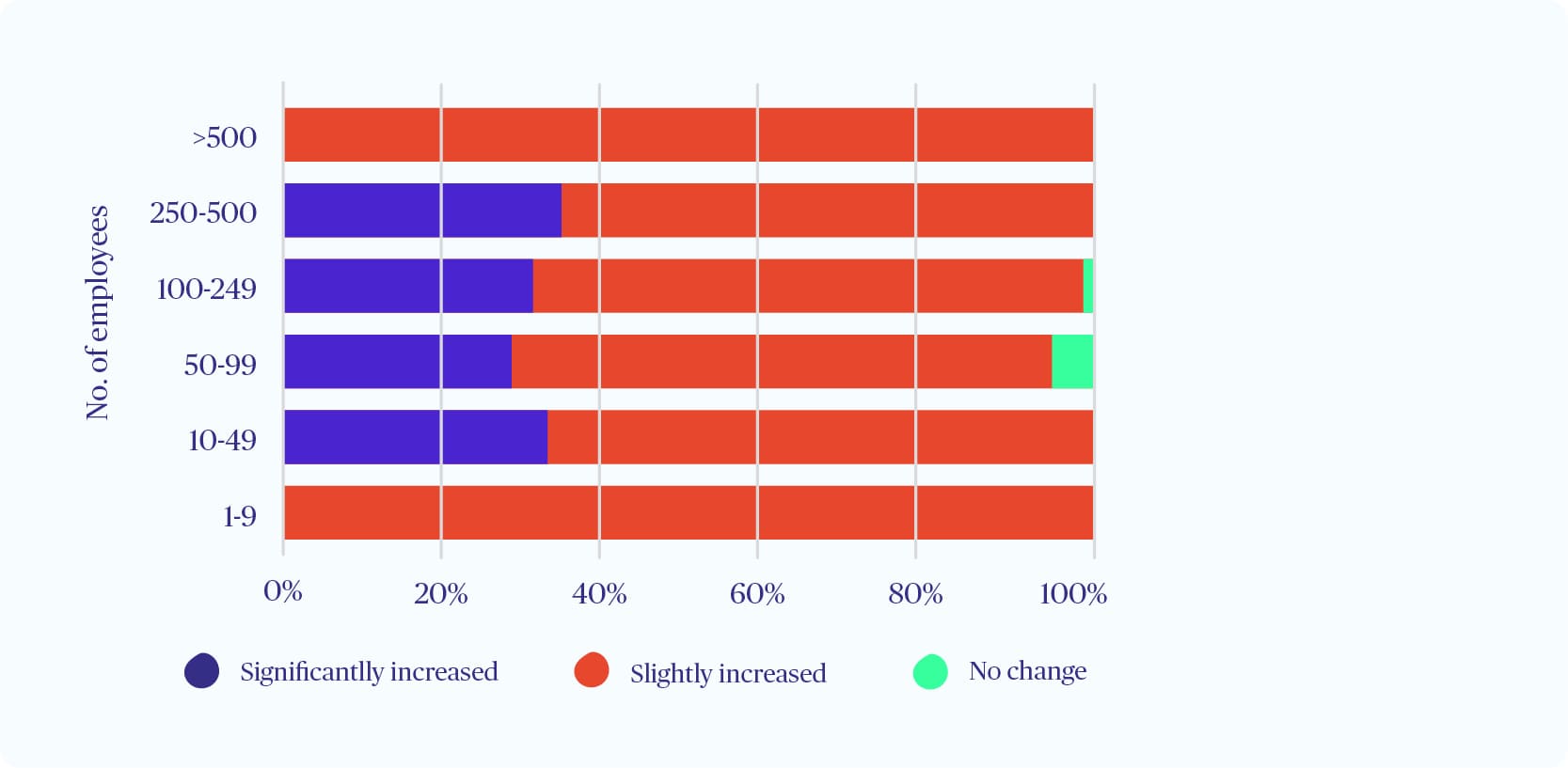
More inquiries are happening out of office hours
84% of firms also reported they receive more inquiries out of office hours than 5 years ago.
Our ‘always on’ culture is driving similar trends across many sectors.
The key is capturing and converting an ‘out of hours’ inquiry, as well as you would do in-hours.
55% of firms rely on web forms to capture out-of-hours inquiries.
Firms can maximize opportunities out of hours by adding live chat to their website and outsourcing calls during ‘closed office’ hours.
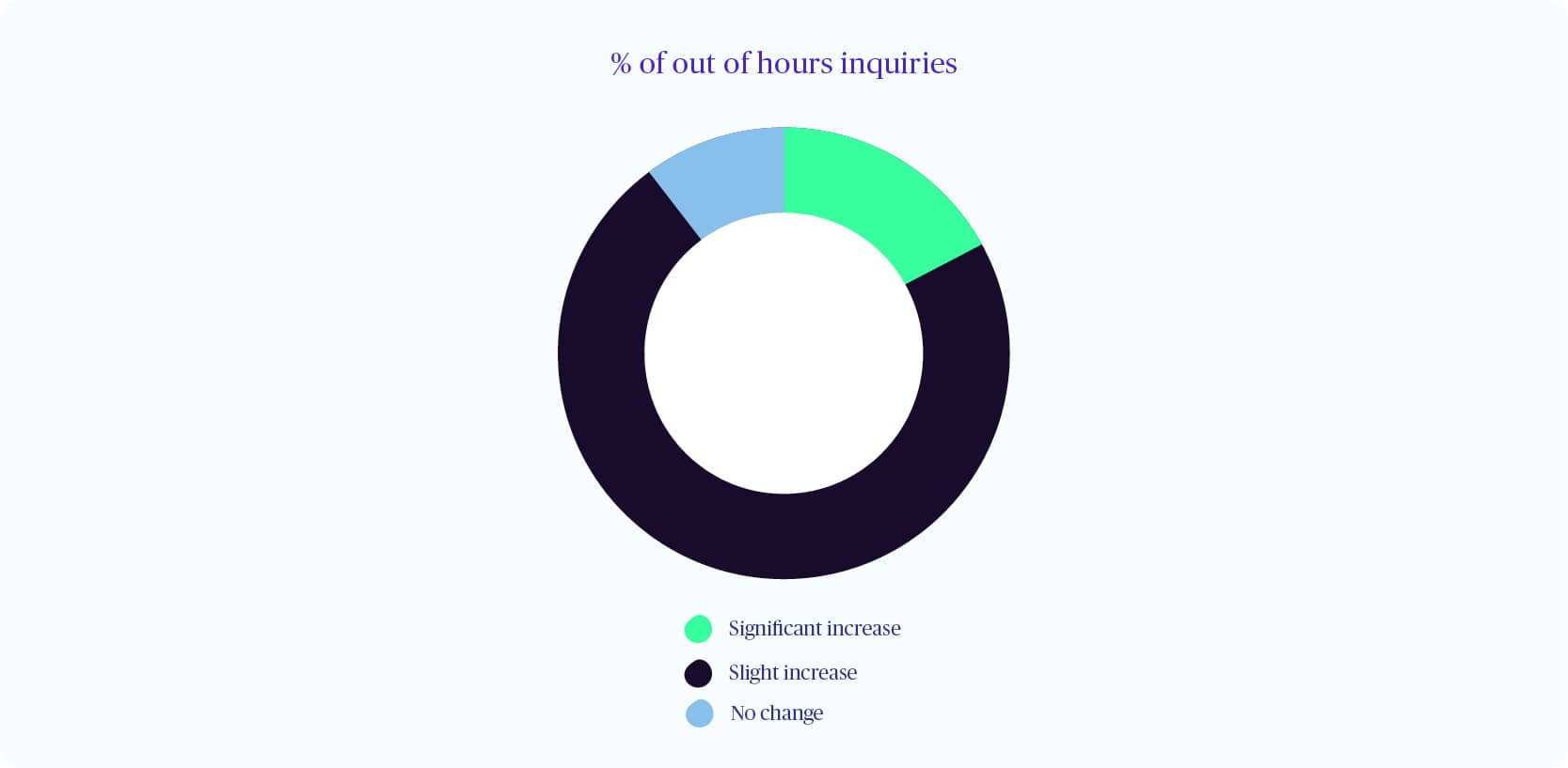
Most popular methods of client communications
Despite the rise in digital channels e.g. live chat, the most popular methods of contacting a law firm are phone calls (50%) and email (45%).
The most common reason for people to call is to schedule an appointment (48%), followed by needing to obtain a quick answer (40%).
The reason why calls have increased is because clients like the reassurance of speaking to someone over the phone (48%) and because customers like to research online and then talk to us to verify details (40%).
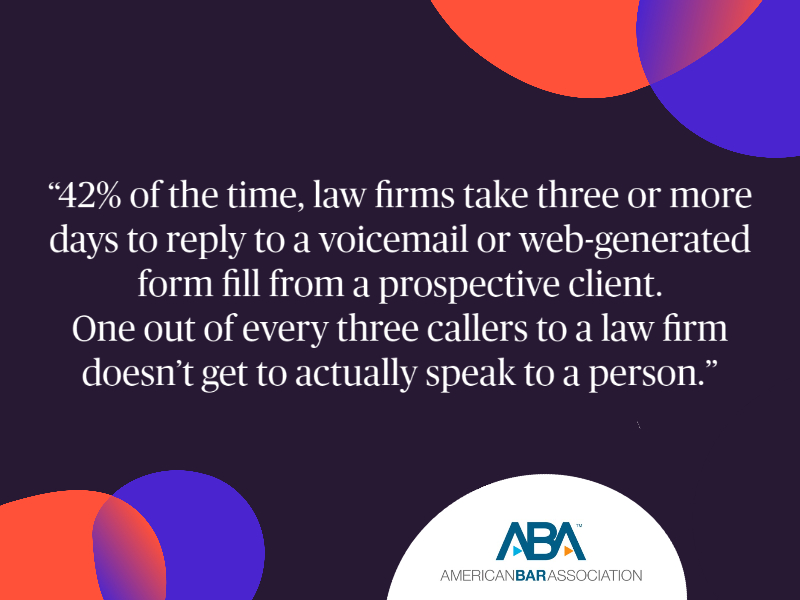
42% of the time, law firms take three or more days to reply to a voicemail or web-generated form fill from a prospective client.
One out of every three callers to a law firm doesn’t get to actually speak to a person.
While 3% of callers gave up before the phone was even answered and 11% of calls lasted less than 10 seconds—most likely prospective clients frustrated by their inability to reach a person. Source: American Bar Association
Using social media to capture clients
Increasingly, firms are using social media platforms to capture the attention of potential clients.
80% of attorneys use social media for professional purposes, including 67% of solos: 83% of lawyers in firms of 2-9 lawyers.
Solos (35%) and lawyers from firms of 2-9 lawyers (34%) were the most likely to report having gotten clients through social media. Source: ABA Techreport 2019
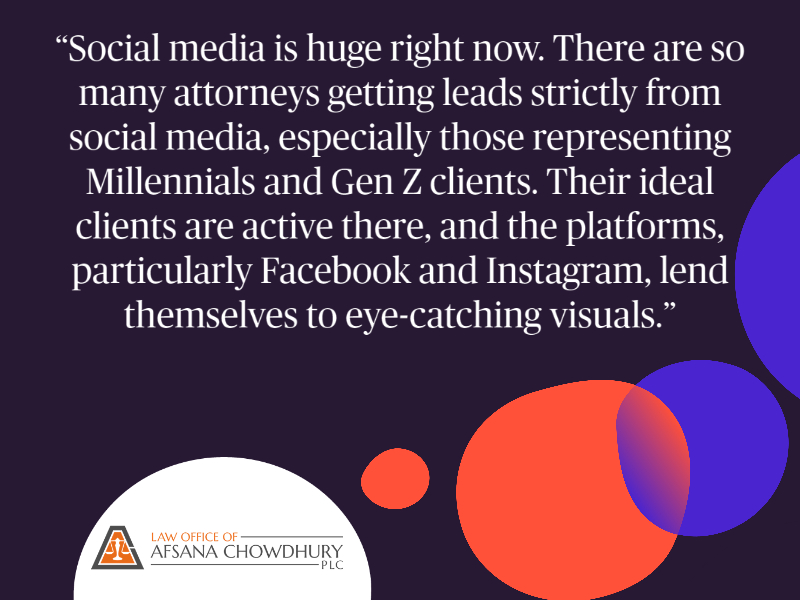
Firms open to embracing technology to capture more inquiries
It’s no secret that law firms are increasingly turning to tech to drive efficiencies, with the abundance of lawtech services available.
And firms report that utilizing tech for lead capture/generation is high on their agenda – 97% of firms stated they would try new tech to drive more inquiries into the business.
Investment in legal tech set an all-time high—up an astonishing 713% in 2018. Source: Forbes
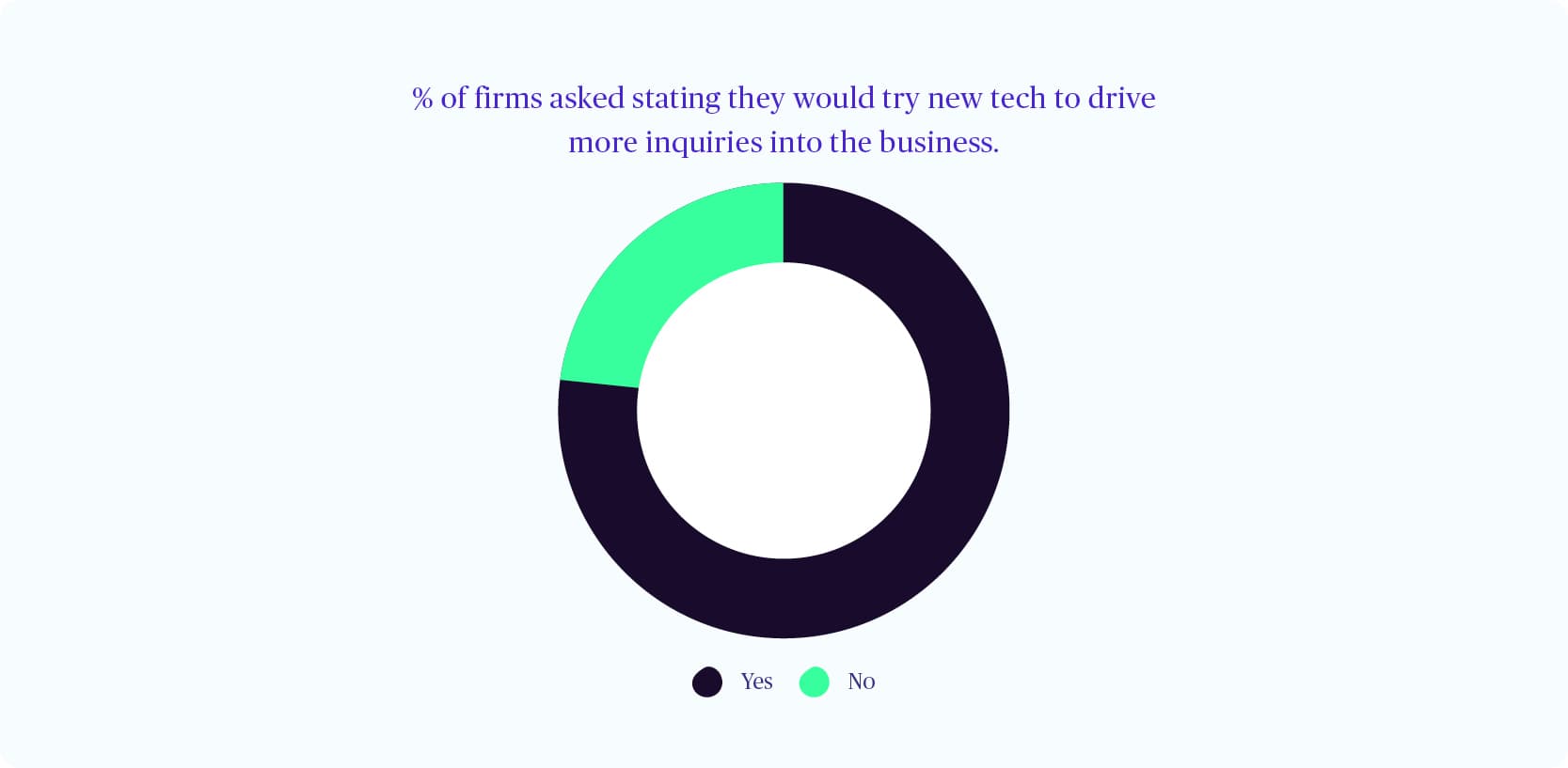
Live chat use in law firms is on the rise
Since lockdown, chats to Moneypenny’s law firm clients have increased by 500%.
And chats resulting in a new case lead increased by 325%.
Live Chat is a one-stop solution designed specifically for the needs of busy firms.
Moneypenny’s live chat system is designed to be used all of the time, or just when a firm’s in-house team is too busy to handle the chats.
Set up is simple – a small piece of code is added to the firm’s website – it’s a five minute job.

Average conversion to client is 38%
Firms are largely converting well, with larger firms (100+ employees) consistently converting 50% of inquiries into clients.
Clearly, larger firms have an advantage here with resources, systems and processes in place to maximize every new opportunity.
Smaller firms have to work harder without an established reputation to fall back on.
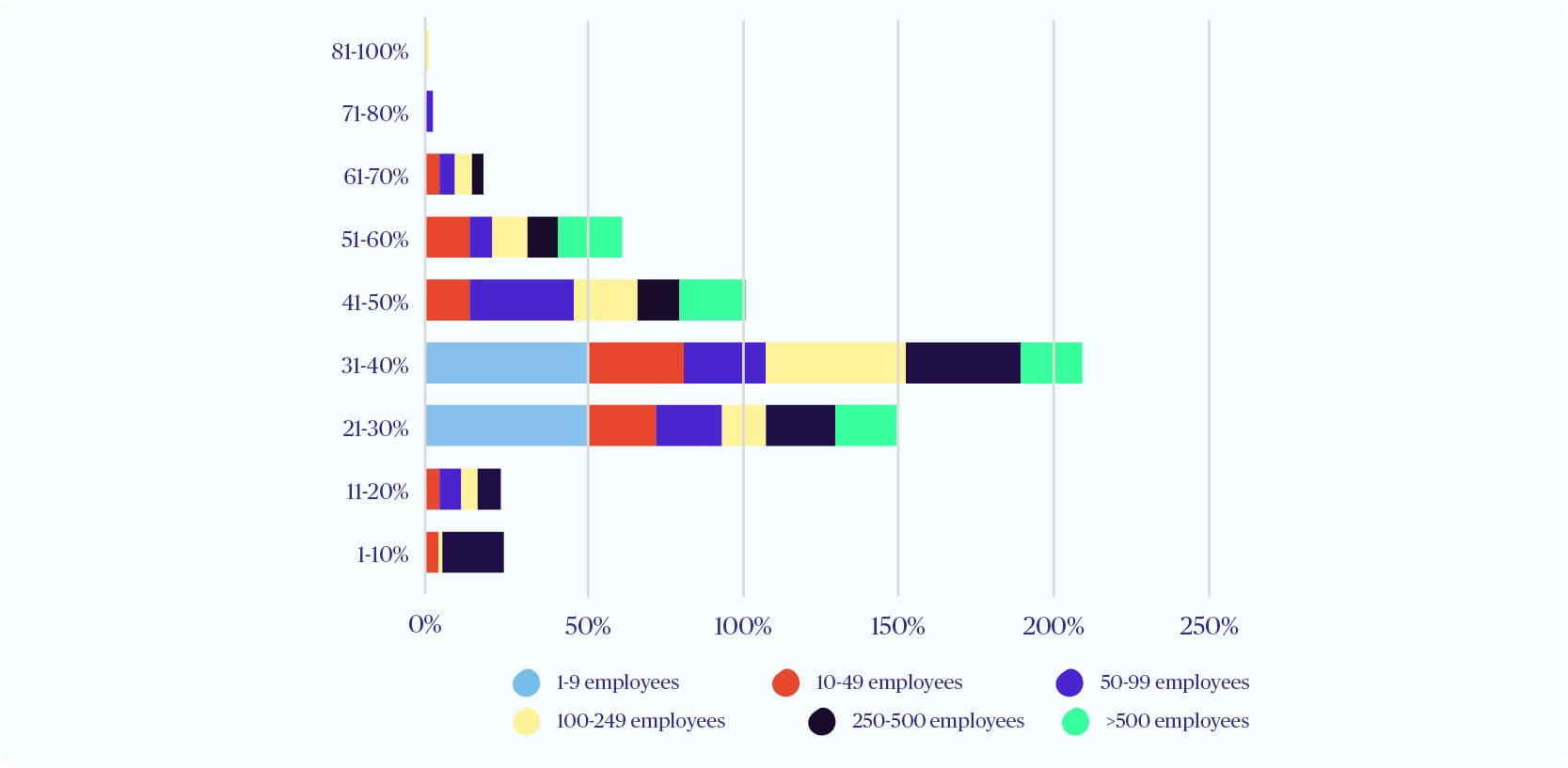
Firms are having to put a lot more effort and creativity into generating new business. Sustaining growth is tough, and for a sector long-reliant on word of mouth and referrals, making new marketing channels deliver is a challenge.
Kate Cox, Moneypenny CMO
In summary
Overall, firms are having to work harder and spend more to generate new business into their firm.
They’re investing in marketing resources, mostly in-house and are open-minded about technology that can help them grow.
Small firms are at a disadvantage, they’re having to work the hardest to convert leads with limited reputation and resources.
Solo and small firms are working really hard on lead generation, they’re seeing the biggest increases in cost per lead probably as they have to stretch beyond ‘free channels’ which fuelled their early growth from WOM and free channels.
Larger firms have the slickest process to convert leads, but are not averse to challenges when trying to sustain growth.
The one consistent trend felt by all sizes of firms is their inability to manage leads at all times.
With many losing business as they’re too busy to handle new inquiries properly.
This feels like their biggest threat if not addressed and biggest opportunity if solutions are sought.
Agile outsourcing is a key part of the solution for this as firms blend in-house expertize with the flexibility of outsourced support to ensure a fast recovery.
About our data:
Moneypenny commissioned a report conducted by Censuswide Consultants, who surveyed 250 senior decision makers within US law firms of all disciplines in December 2019. Unless otherwise stated, all graphs are sourced from the Moneypenny: Legal Leads report 2020. Clients and partners were also invited to provide viewpoints on the various findings throughout.
Discover what Moneypenny can do for your law firm to increase your marketing ROI.



















